Permeation of topically applied caffeine through human skin – a comparison of in vivo and in vitro data
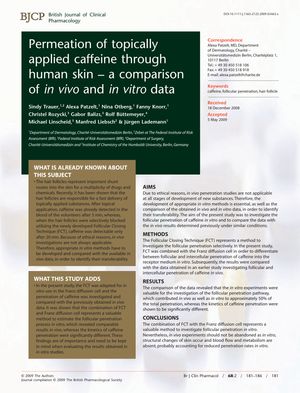
TLDR Caffeine penetrates human skin in lab tests similarly to real-life conditions, but actual skin use is still essential for accurate results.
The study aimed to develop and validate an in vitro method for investigating the penetration of caffeine through human skin and to compare the results with previously obtained in vivo data. The Follicular Closing Technique (FCT) was adapted for use with the Franz diffusion cell to differentiate between follicular and intercellular penetration of caffeine. The in vitro results showed that the follicular penetration pathway contributed to approximately 50% of the total penetration, similar to in vivo findings. However, the kinetics of caffeine penetration were significantly different between the two methods. The study concluded that while the combination of FCT and the Franz diffusion cell is a valuable in vitro method for studying follicular penetration, in vivo experiments remain essential due to structural changes in skin, absence of blood flow, and metabolism in vitro, which could lead to reduced penetration rates compared to in vivo conditions.
View this study on europepmc.org →
Cited in this study
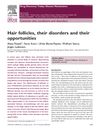
research Hair follicles, their disorders and their opportunities
Hair follicles offer promising targets for delivering drugs to treat hair and skin conditions.
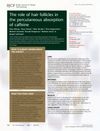
research The role of hair follicles in the percutaneous absorption of caffeine
Hair follicles significantly increase the speed and amount of caffeine absorbed through the skin.
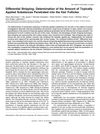
research Differential Stripping: Determination of the Amount of Topically Applied Substances Penetrated into the Hair Follicles
The new "differential stripping" method effectively measures how much substance gets into hair follicles.
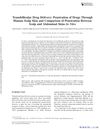
research Transfollicular Drug Delivery: Penetration of Drugs Through Human Scalp Skin and Comparison of Penetration Between Scalp and Abdominal Skins In Vitro
Drugs penetrate scalp skin better than abdominal skin, with scalp hair follicles aiding in higher drug delivery.